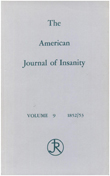Individual variation in D2 dopamine receptor occupancy in clozapine- treated patients
Abstract
OBJECTIVE: The objectives of this study were 1) to pursue the question of clozapine's striatal D2 occupancy in relation to its clinical effectiveness; 2) to investigate the relation between schizophrenic symptoms, clozapine blood levels, and estimated D2 occupancy during clinically stable and unstable conditions; and 3) to examine long-term stability in D2 occupancy. METHOD: Specific binding of the D2 radioligand [123I]benzamide ([123I]IBZM) was studied with single photon emission computed tomography in 13 patients with schizophrenia when they were clinically stable during chronic clozapine treatment, after clozapine dose reduction of > or = 50%, and in a subgroup (N = 7) after restabilization on clozapine regimens. Clozapine's estimated D2 occupancy was based on comparison with values from drug-free normal subjects. RESULTS: A wide range of estimated D2 occupancies (18% to > or = 80%) were associated with sustained, favorable response to clozapine without correlation with residual symptoms. Clozapine blood levels were negatively related to [123I]IBZM specific binding. Acute dose reduction was associated with predicted worsening in positive and negative symptoms and increases in [123I]IBZM specific binding. Independent of clozapine blood level, patients with more symptoms showed lower [123I]IBZM specific binding, consistent with competition of endogenous dopamine for D2 binding sites in patients with greater symptoms. Restabilization on clozapine regimens produced D2 occupancies closely correlated with baseline values. CONCLUSIONS: There was no evidence for a critical degree of D2 occupancy required to sustain clozapine's therapeutic effects across subjects. Simple linear regression was the best-fit model for clozapine's D2 occupancy. Longitudinal follow-up suggests stability over time of D2 occupancy in relation to dose and clinical response within individual patients.
Access content
To read the fulltext, please use one of the options below to sign in or purchase access.- Personal login
- Institutional Login
- Sign in via OpenAthens
- Register for access
-
Please login/register if you wish to pair your device and check access availability.
Not a subscriber?
PsychiatryOnline subscription options offer access to the DSM-5 library, books, journals, CME, and patient resources. This all-in-one virtual library provides psychiatrists and mental health professionals with key resources for diagnosis, treatment, research, and professional development.
Need more help? PsychiatryOnline Customer Service may be reached by emailing [email protected] or by calling 800-368-5777 (in the U.S.) or 703-907-7322 (outside the U.S.).



